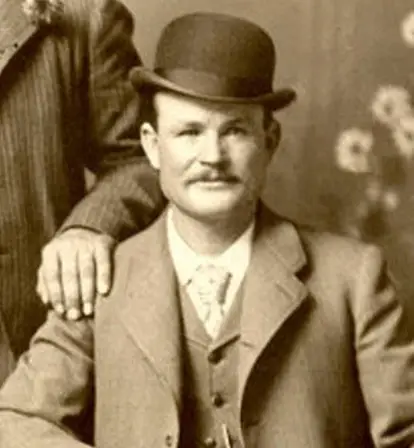One of the most legendary Old West outlaws, Butch Cassidy robbed banks and trains alongside the Sundance Kid and the Wild Bunch until his mysterious death in 1908.
Born just after the Civil War to a frontier family, Butch Cassidy was practically destined to become a cowboy when he grew up. But he also became a famous robber and gang leader — who brought a trademark style to his life of crime. And after his death, Cassidy would go down in history as one of the best-known outlaws of the Wild West.
Working alongside his gang, the Wild Bunch, and with the Sundance Kid, Cassidy spent his criminal career robbing trains and banks, spending (and sharing) his stolen fortunes, and heading back out to steal once again.
He didn’t know it at the time, but his story would later be featured in countless books, television shows, and movies, including the classic 1969 Western film Butch Cassidy and the Sundance Kid. But even when Cassidy was alive, it was clear that he wasn’t just some run-of-the-mill outlaw.
Unlike many others in his trade, Cassidy managed to evade capture for years.
It wasn’t until the early 20th century that the law finally caught up with him. But through it all, the only real ambition he ever expressed was to be a respectable rancher someplace where he wasn’t a wanted man.
The Early Life Of Butch Cassidy

Digital Public Library of AmericaButch Cassidy as a young man. Circa 1880-1889.
Butch Cassidy was born Robert LeRoy Parker on April 13, 1866. He was the son of two English immigrants who had converted to Mormonism. His parents made the trek to what would become the state of Utah in the 1850s and established a small ranch in an isolated mountain valley.
The first few years of his life in Beaver, Utah Territory, were unremarkable — he was one of 13 children on a farm. He likely had a peaceful childhood, playing the harmonica and learning the doctrine of the Mormon Church.
Then, when he was around 14 years old, he set off to Rock Springs, Wyoming, to find work. Along the way, he fell in with a cattle rustler who went by the name Mike Cassidy. The two apparently got along well enough that the younger man would eventually adopt “Cassidy” as his own last name.
As for his new first name, “Butch” likely came about during his teen years in Wyoming, potentially from his time working as a butcher.
The Beginnings Of A Life Of Crime
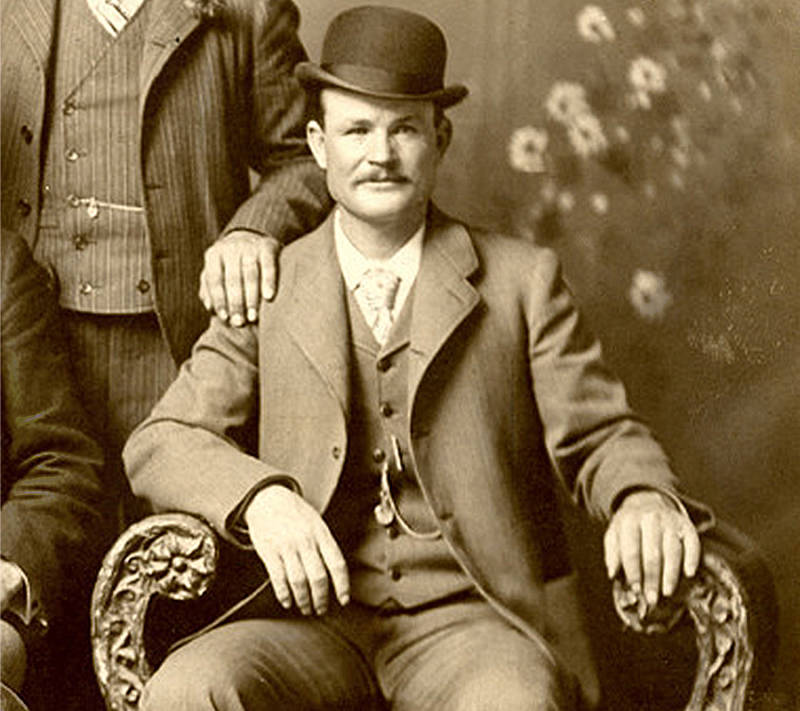
Wikimedia CommonsButch Cassidy sits with the Wild Bunch for a portrait in Fort Worth, Texas. 1901.
Butch Cassidy’s legendary life of crime began by accident and almost as a joke. When he was still a teenager, around 1880, Cassidy rode to a town to buy some clothes. It was a Sunday, and he found the shop locked up.
Not wanting to go home empty-handed, Cassidy broke into the store and took a pair of jeans, though he left an “IOU” for the cashier. The shop owner didn’t think that this was funny, so he ended up pressing charges for burglary. Luckily for Cassidy, the charges ended in an acquittal.
Little is known about the rest of Cassidy’s teen years, but he likely became involved in the underground trade of stolen horses when he was around 18 years old. By the time he was 21, Cassidy moved to Telluride, Colorado, where he met Matt Warner, in 1887. Warner owned a racehorse, and he and Cassidy began racing at various events and splitting the winnings.
But before long, the men wanted more money than the racehorse could bring in for them — so they began plotting a bank robbery.
On June 24, 1889, Cassidy, Warner, and two brothers named Tom and Bill McCarty robbed the San Miguel Valley Bank in Telluride. Their reported haul was $21,000, well over half a million dollars today. Even after a four-way split, each man had a hefty sum. But it wasn’t long before they spent it all at local brothels and saloons, leaving the men looking for another easy target.
The Formation Of The Wild Bunch
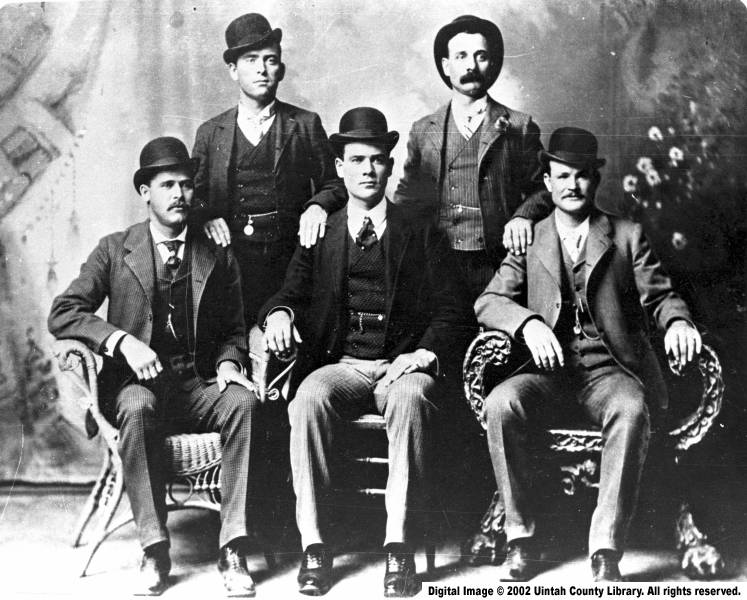
Digital Public Library of AmericaSeated left to right are the Sundance Kid, Ben Kilpatrick, and Butch Cassidy. Standing from left to right are Will Carver and Kid Curry. Circa 1900.
In 1894, Butch Cassidy was arrested in Wyoming for stealing horses and for potentially running an organized crime scheme. He served 18 months, but prison was certainly no deterrent to his chosen way of life.
Soon after his release in 1896, Cassidy assembled a gang with some of his criminal friends. They called themselves the Wild Bunch, borrowed from the infamous Doolin-Dalton Gang (who were also known as the Wild Bunch).
The Wild Bunch’s first major raid took place in August 1896, when they robbed a bank in Montpelier, Idaho, and escaped with $7,000. Before long, they were holed up in Robbers Roost — an outlaw hideout in the southeastern part of Utah — and staging raids across the Wild West.
Meanwhile, Cassidy began to cultivate a certain image for himself as an outlaw. Though many criminals of that time had no problem resorting to violence, Cassidy took a different approach. While he may have waved a gun around during robberies like other outlaws, he didn’t actually use his weapon. And some say that he even boasted of never having killed a man.
Furthermore, he garnered a reputation for being something of a Robin Hood figure. Though many outlaws of that era kept their fortune to themselves, he was determined to share the wealth with the common people.
Cassidy once wrote of stealing from wealthy people, “The best way to hurt them is through their pocketbook. They will holler louder than if you cut off both legs. I steal their money just to hear them holler. Then I pass it out among those who really need it.” Unsurprisingly, this helped him cultivate many valuable allyships with regular people in several towns.
The Wild Bunch really hit it big on June 2, 1899, when they robbed a Union Pacific passenger train and got away with up to $60,000. This attracted the attention of the authorities, but there was only so much that the federal government could do to catch them in the wide-open West.
This was before the government had strong interstate law enforcement powers, so federal authorities did the next best thing and hired the Pinkerton National Detective Agency to go after Butch Cassidy.
How Butch Cassidy And The Sundance Kid Went On The Run At The Turn Of The Century
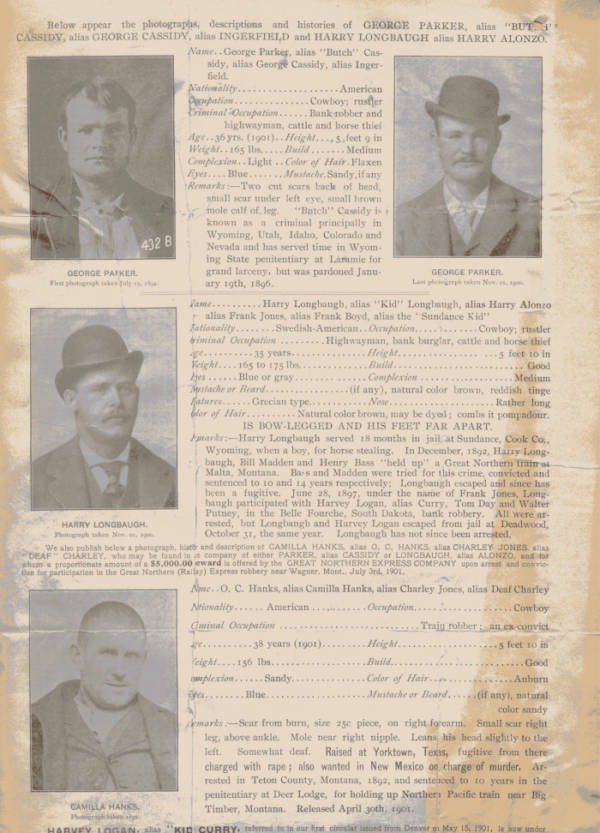
Digital Public Library of AmericaA wanted poster for the capture of Butch Cassidy, the Sundance Kid, and other members of the Wild Bunch.
Back in those days, appearing on Pinkerton’s radar was a bad idea.
The private detective firm had experience catching counterfeiters as well as providing protection for the president. They were, in fact, the nucleus of the future Secret Service. And their sights were set on the Wild Bunch, including Butch Cassidy and Harry Longabaugh, better known as the Sundance Kid.
By the turn of the century, 33-year-old Cassidy had grown tired of life on the run. He had been a wanted man for years. In some states, the reward for his capture was up to $30,000. Pictures of him and his gang were hanging in every post office in the West, and Cassidy seemed to want to end it all.
In 1899, Cassidy appealed to the governor of Utah for amnesty. The governor advised Cassidy to negotiate with Union Pacific to drop their charges against him. But if there ever were any negotiations, they ended in 1900 when Cassidy and Sundance robbed yet another Union Pacific train.
With the heat back on, Cassidy and Sundance fled east to New York in 1901. There, they boarded a ship for Argentina, where they bought a ranch and lived under assumed names for several years. However, by 1906, the duo had returned to robbing banks and trains across South America.
The Mysterious Death Of Butch Cassidy
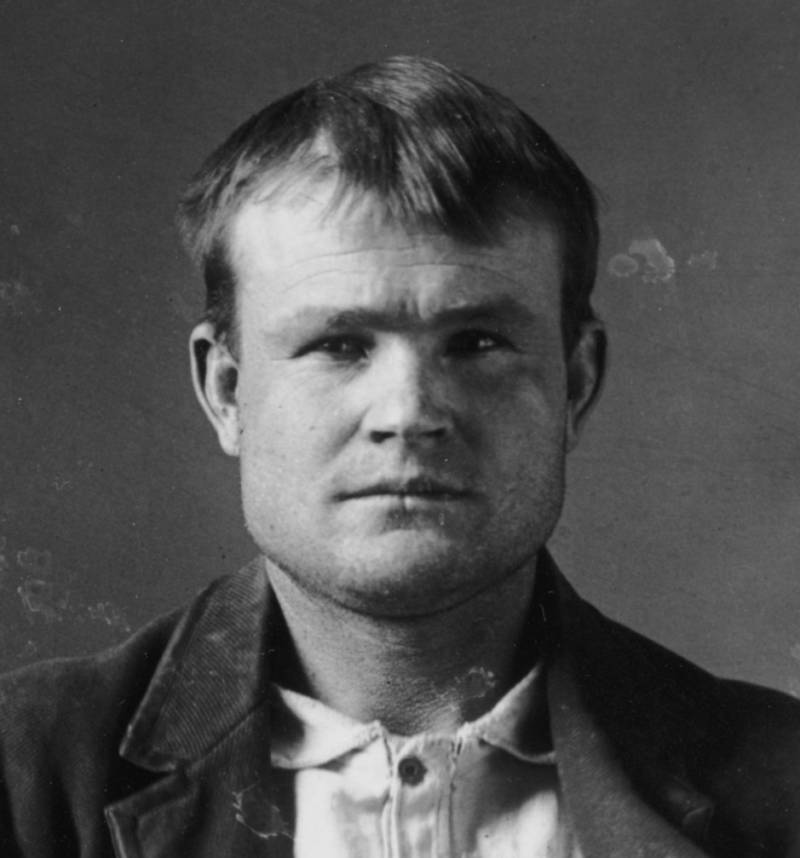
Wikimedia CommonsButch Cassidy’s mugshot from the Wyoming Territorial Prison in Laramie. 1894.
In 1908, Butch Cassidy and the Sundance Kid arrived at a boarding house in Bolivia. The owner of the house soon noticed that their mule had a brand from a ranch that had just been robbed. So he called the authorities.
At the time, there happened to be a detachment of cavalry near the town where the duo was staying. And upon hearing that Cassidy and Sundance were in the area, they quickly formed a makeshift posse.
On the evening of November 6, 1908, Bolivian soldiers converged on Cassidy and Sundance’s room. Also present were local police and the town’s mayor, who intended to personally put the cuffs on Butch Cassidy himself.
But it didn’t work out that way at all. The duo soon spotted the authorities moving into position and decided to fight their way out. Cassidy and Sundance started shooting, killing at least one of the Bolivian soldiers.
In return, the soldiers and police officers peppered the house with bullet holes. Around 2:00 a.m., during a lull in the shooting, the Bolivians heard screaming coming from inside the cabin, followed by two gunshots.
Police entered the dwelling to find two men — who they believed to be Butch Cassidy and the Sundance Kid — dead on the floor. Both men had been riddled with bullets.
The man believed to be Sundance had a gunshot wound in his forehead, as if he’d been executed. And the man thought to be Cassidy had been shot in the temple from close range.

20th Century FoxIn the 1969 film Butch Cassidy and the Sundance Kid, the two famous outlaws are portrayed as best friends, but it’s believed Cassidy may have been closer to William Ellsworth “Elzy” Lay, another member of the Wild Bunch.
Authorities believed that Cassidy had shot the wounded Sundance to put him out of his misery, then turned the gun on himself. Thus, the legend of Butch Cassidy and the Sundance Kid dying by their own hand rather than giving in to the authorities was born. But other legends cropped up, too.
In the 1969 movie Butch Cassidy and the Sundance Kid, it’s heavily implied that the two famous outlaws went out in a blaze of glory during a shootout with the authorities in Bolivia. But in reality, their entire fate remains disputed and murky, with rumors of their alleged escape persisting for years.
One rumor was that Cassidy and Sundance weren’t in the house at all, but that the Bolivians got excited at the prospect of catching them and instead riddled a pair of ordinary robbers with bullets. In this version of events, Cassidy returned to Utah and reconnected with his family.
Cassidy’s younger sister, Lula Parker Betenson, published a book in 1975 called Butch Cassidy, My Brother. In it, she states that Cassidy returned to the United States and lived out his years in the Northwest until his death in 1937. And in 1960, Josie Bassett, the sister of Cassidy’s ex-girlfriend Ann Bassett, claimed that Cassidy had been dead “for about 15 years.”
If the rumors are true, only Butch Cassidy’s family knows where his gravesite is — and they’re not telling. As they put it, Cassidy deserves to rest in peace.
After this look at Butch Cassidy, check out these real photos of life on the American frontier. Then, read up on the 10 most iconic Wild West figures.
